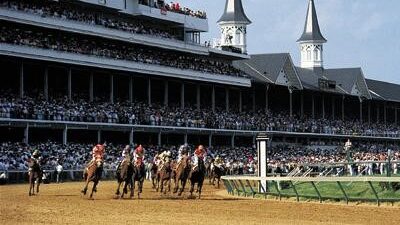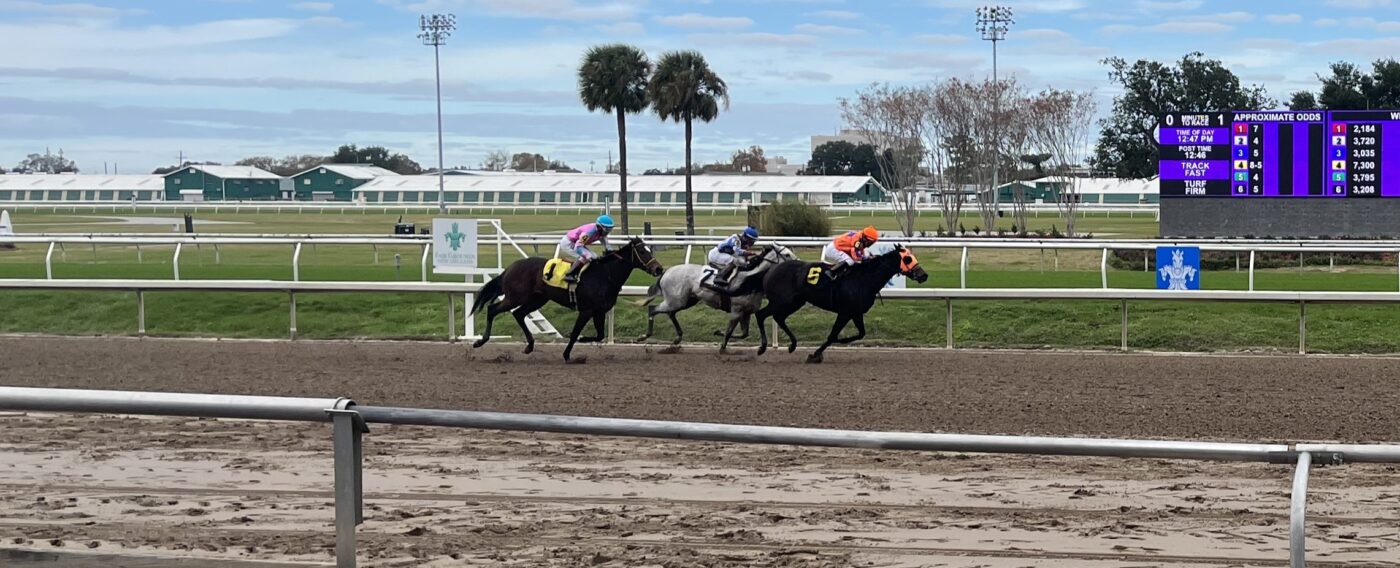Last updated: March 11, 2025
Have you ever wondered what sets the prestigious Kentucky Derby apart from other horse races? The answer lies in the thrilling world of stakes races. Stakes races are not just any horse racing events; they represent the pinnacle of equine competition, combining high stakes, top-tier horses, and intense excitement.
In these races, the stakes are more than just a term – they’re a significant investment by the owners and a chance for glory on the racetrack. As an avid equestrian and seasoned racehorse owner, I bring firsthand insights into what makes stakes races the most celebrated events in horse racing and why they capture the imagination of horse lovers worldwide.

What Are Stakes Races?
Stakes races represent the pinnacle of achievement in horse racing, where history, tradition, and the future of sport converge.
- High-profile horse racing events.
- Owners contribute to the prize purse through entry fees.
- Known for prestige, significant financial stakes, and top-tier horse participation.
Why They Matter:
- Symbolize the pinnacle of achievement in horse racing.
- Blend history, tradition, and the sport’s future.
Defining Features:
- Elevated Status: Distinguished by significant financial stakes and elite competition.
- Stringent Entry Criteria: Age, breed, and performance-based qualifications.
- Financial Investment: Owners’ stakes contribute directly to the purse.
- Prestige & Rewards: Attract the best in the equine world, offering substantial prize money and prestige.
Historical Significance:
- A centuries-old tradition, evolving from local contests to international spectacles.
- They are proving grounds for breeding and training methods.
- Influential in shaping breeding strategies and enhancing horses’ lineage value.
Stakes Races: Conditioned vs. Handicap
- Conditioned Races: Weight based on a horse’s record or earnings.
- Handicap Races: Weight assigned by an official to level the playing field. Example: Seabiscuit’s high weight.
Turf or Dirt
- Downgrade Rule: Graded turf races moved to the main track are downgraded one level, subject to committee review.
Interesting Facts:
- A race can pause for a year without losing its grade in the U.S.
Levels of Graded Stakes Races Explained

1. Listed Races
- The entry point into the world of graded stakes races, Listed races are the initial step for horses showing potential for higher competition.
- Significance: While being the lowest level, these races are crucial for horses to prove themselves and move up the grading scale.
2. Grade III
- A step above Listed races, Grade III events start to feature a higher caliber of competition, with horses that have shown consistent performance.
- Significance: Winning or performing well in a Grade III race can significantly enhance a horse’s reputation and value, marking them as contenders for even more prestigious races.
3. Grade II
- Midway through the grading scale, Grade II races are highly competitive, featuring horses that have demonstrated superior ability in lower-grade races.
- Significance: Success in Grade II races is often seen as a precursor to top-tier competition, with many horses using these events as a springboard to Grade I races.
4. Grade I
- The pinnacle of horse racing, Grade I races are the most prestigious events, attracting the elite of the equine world.
- Significance: Winning a Grade I race is a mark of excellence, contributing to a horse’s legacy and significantly influencing breeding potential and value.

Iconic Stakes Races
- Kentucky Derby (Grade I): Qualification through global races, run for the roses, purse: $3 million.
- The Preakness Stakes (Grade I): 14 horses qualify annually, total purse: $1.5 million.
- The Belmont Stakes (Grade I): Nomination fees required, set weights, purse: $1.5 million.
- The Breeders Cup Classic (Grade I): Qualify through Challenge races or points; purse: $6 million.
Purse Highlights
- The Breeders Cup offers $30 million in purses over two days. For the fastest horse racing times, click the link.
Below is a YouTube video of the 2019 Kentucky Derby, a Grade 1 Stakes race.
Stakes Races & Horse Race Betting
Stakes races not only captivate the hearts of horse racing aficionados but also ignite the fervor of bettors seeking the ultimate wagering challenge.
Why Stakes Races Are Betting Highlights:
- Marquee Events: Draw significant betting interest from all levels of punters.
- High Caliber Horses: Makes for unpredictable outcomes, adding to the betting thrill.
- Large Purses & Prestige: Lead to bigger betting pools and diverse wagering options.
- Betting Promotions: Often featured in accumulators and jackpots for big wins.
Public and Media Magnet:
- Beyond Sports: Stakes races are cultural spectacles, attracting media and public attention.
- Media Coverage: Extensive pre- and post-race analyses enrich the narrative around the events.
- Cultural Phenomena: The glamour and festivities around these races draw widespread interest.
Personal Insight: Grade II Stakes Races Impact
When events like the Louisiana Derby at New Orleans Fairgrounds occur, the track is packed with people from all over, and the economic spike is obvious. The event energizes local businesses and fills the city with excitement. These events create jobs and boost local revenue.

FAQs about Stakes Races
What are stakes races in horse racing?
Stakes races are high-level horse racing competitions where the owners of the participating horses contribute to the prize purse through entry fees. These races are known for their prestige, significant prize money, and the participation of top-quality horses.
How are stakes races graded?
Stakes races are graded into four categories: Listed, Grade III, Grade II, and Grade I. The grading is determined by a governing body and is based on factors such as the quality of the participating horses, the race’s history, and the amount of the purse.
What is the difference between a graded stakes race and a non-graded stakes race?
The main difference lies in the level of recognition and prestige. Graded stakes races are officially recognized by racing authorities and carry more prestige, often attracting higher-caliber horses and offering larger purses.

Conclusion
Stakes races are the crown jewels of horse racing, celebrated for their prestige, intense competition, and storied past. These events are more than mere races; they are grand spectacles that showcase the best in equine and human athleticism, while also honoring the sport’s rich heritage and evolving customs.
The high financial stakes, rigorous entry standards, and worldwide attention highlight their significance in the racing realm. These races weave captivating tales of victory, resilience, and unwavering pursuit of greatness, captivating both long-time fans and newcomers.
Call to Action/Engagement
- Share Your Experiences: Have you ever attended a stakes race or followed one closely? Share your experiences and what these races mean to you in the comments below.
- Further Reading and Resources: For those eager to learn more, check out [recommended books, documentaries, websites].
- Join the Conversation: Engage with us on social media to share your thoughts and connect with other horse racing enthusiasts. Follow us on [social media links], and don’t forget to use the hashtag #StakesRacingSense to join the conversation.
- Subscribe and Stay Updated: To stay updated on the latest in horse racing, subscribe to our newsletter and never miss an update on upcoming races, betting tips, and horse racing news.
Additional Resources
For those keen on diving deeper into the world of horse racing, here are some valuable resources that offer a wealth of information:
- The Jockey Club: An essential resource for understanding the intricacies of thoroughbred racing and breeding. Visit The Jockey Club
- BloodHorse: Stay updated with the latest news, breeding, race results, and thoroughbred sales. Explore BloodHorse
- Racing Post: A comprehensive site for racecards, results, statistics, and betting tips. Check out Racing Post
- Equibase: Your official source for horse racing entries, results, statistics, and mobile racing data. Discover Equibase
- Daily Racing Form: Offers race entries, results, horse racing analysis, and handicapping. Visit Daily Racing Form
- Horse Racing Nation: A dynamic community of horse racing fans featuring news, opinions, race previews, and betting advice. Join Horse Racing Nation
- Paulick Report: Provides the latest thoroughbred racing news, analysis, and commentary. Read Paulick Report
- National Thoroughbred Racing Association: The official voice of thoroughbred racing. Explore NTRA
Related Articles
- How Tall Are Jockeys, and How Much Do Jockeys Weigh?
- How Jockeys Choose the Horse They Ride: All You Need to Know
- Why do Jockeys Wear Silks?

About the Author: Miles Henry
Lifelong Horseman | Racehorse Owner | Published Author
Miles Henry brings over 25 years of hands-on experience training and owning Thoroughbred racehorses. Raised with Quarter Horses and Appaloosas, he’s spent a lifetime learning from horses—on the track, in the barn, and in the field. Today, he runs a small but successful racing stable in Louisiana and shares real-world insights on HorseRacingSense.com, helping horse owners, fans, and bettors navigate the sport with confidence.
📚 Books: View Miles’s books on Amazon »
🎧 Podcast Guest: Animal Tales Ep. 32 |
YouTube Interview
📩 Newsletter: Sign up for racing tips and horse care advice »
🔗 Follow Miles:
Twitter |
Facebook |
YouTube


